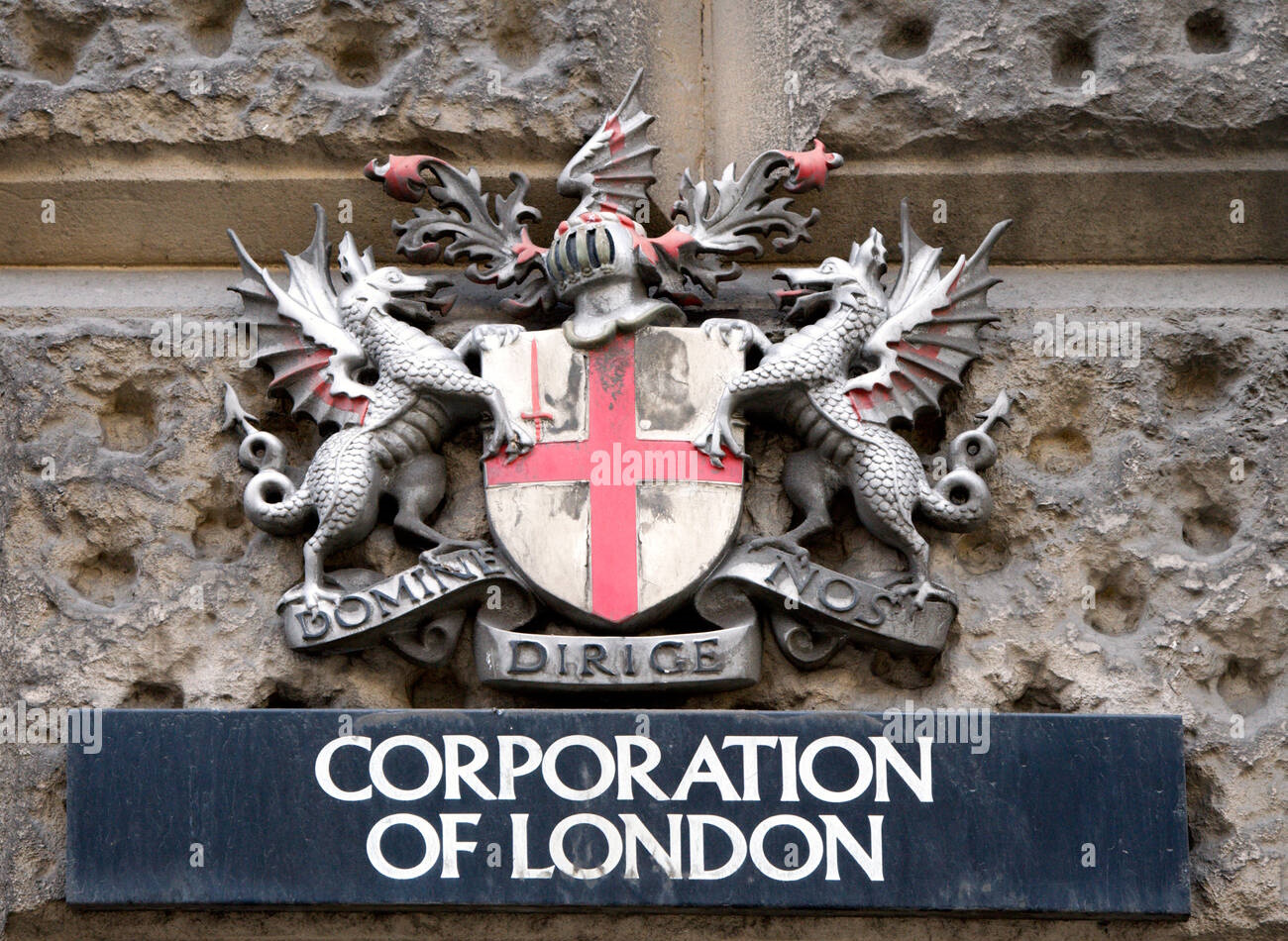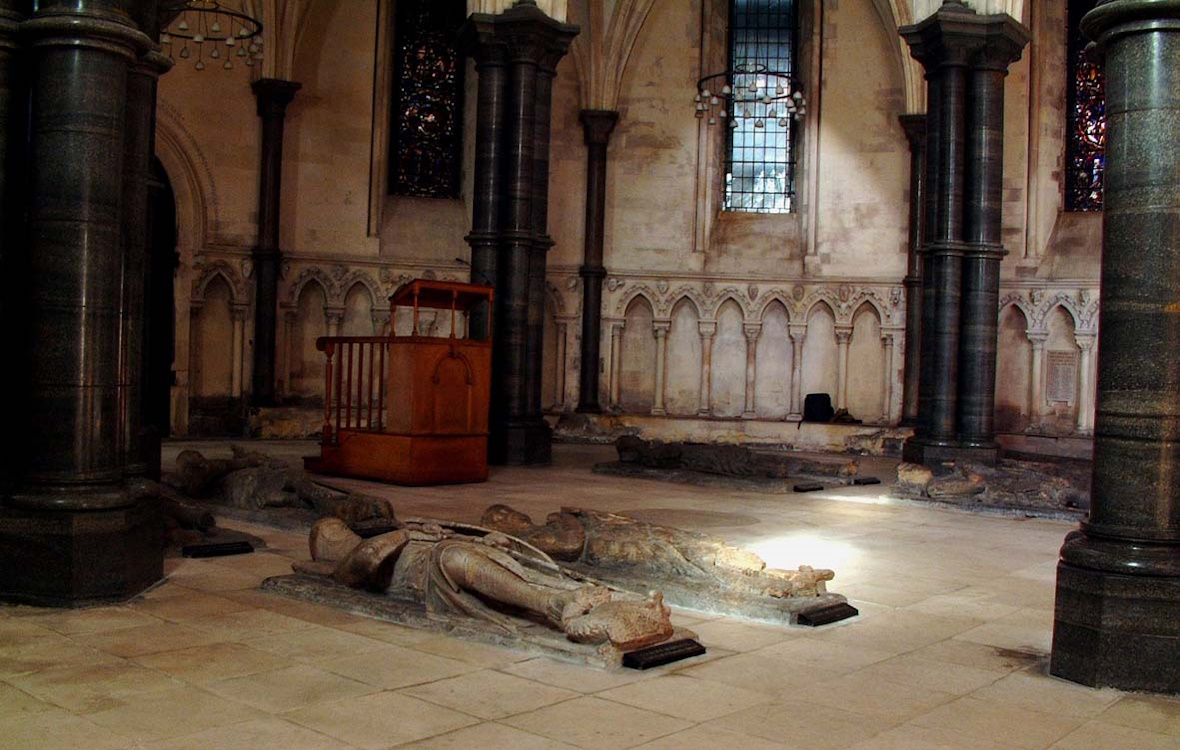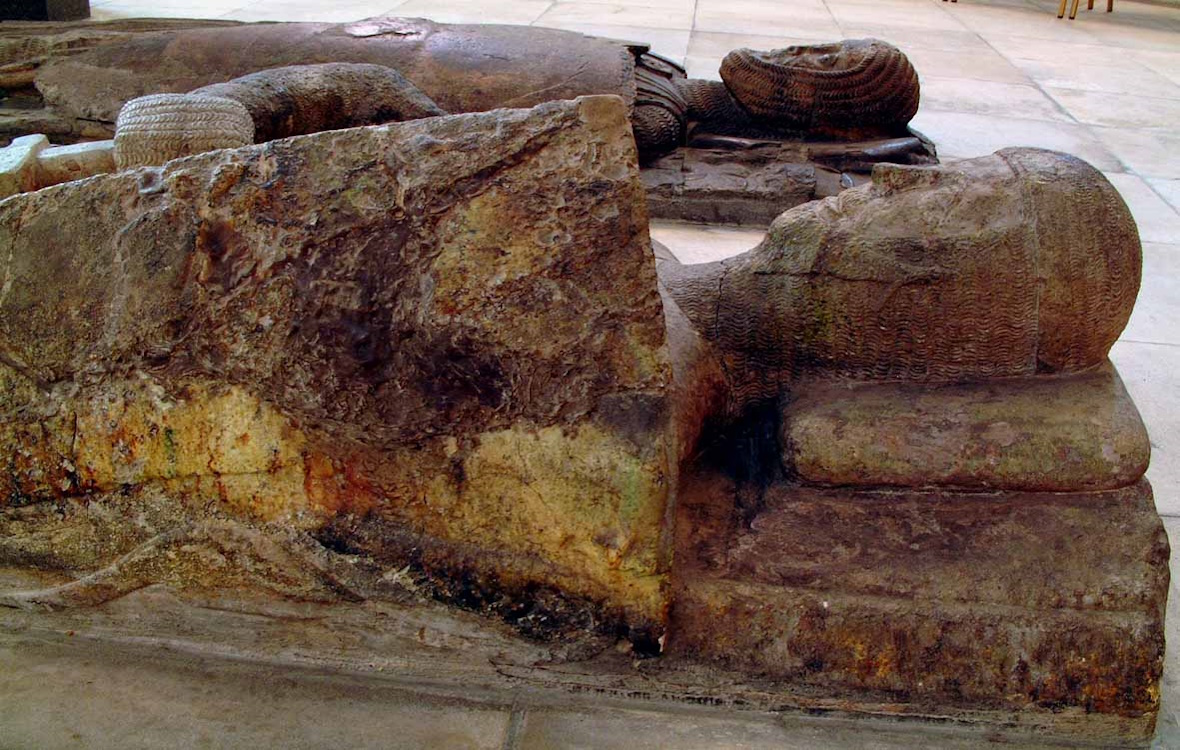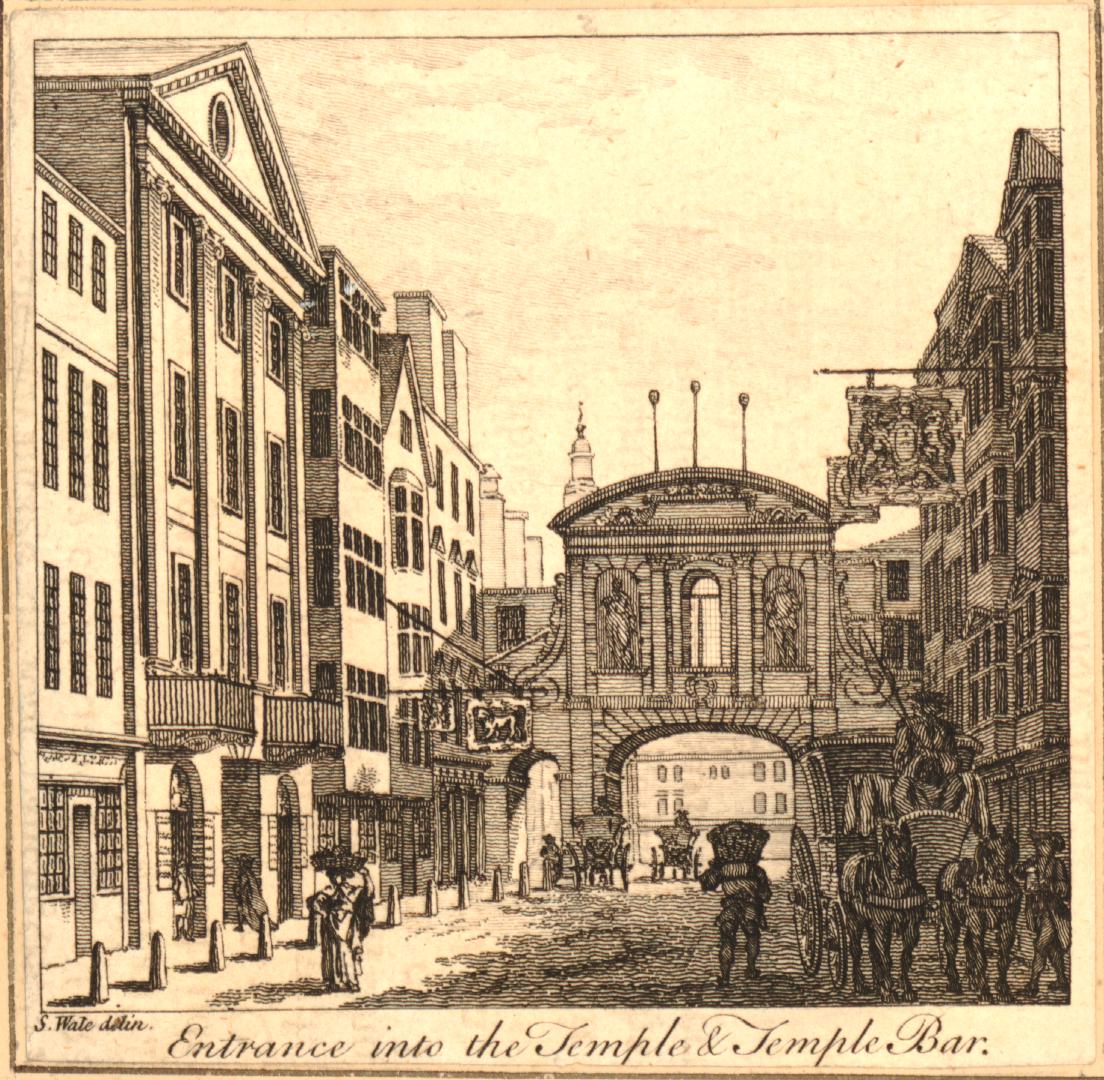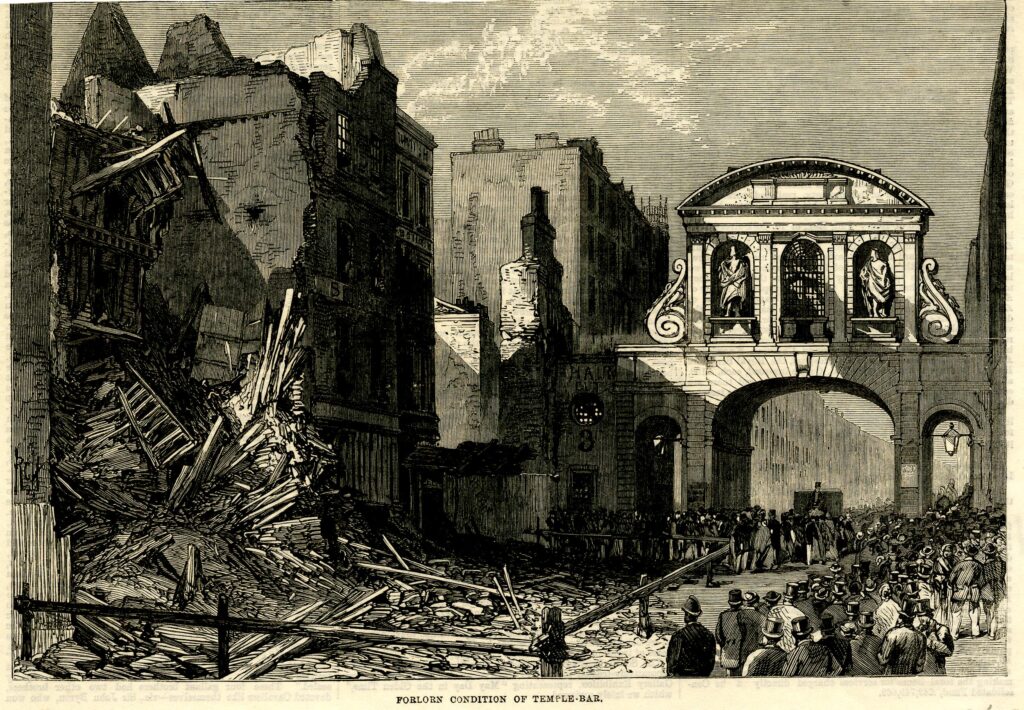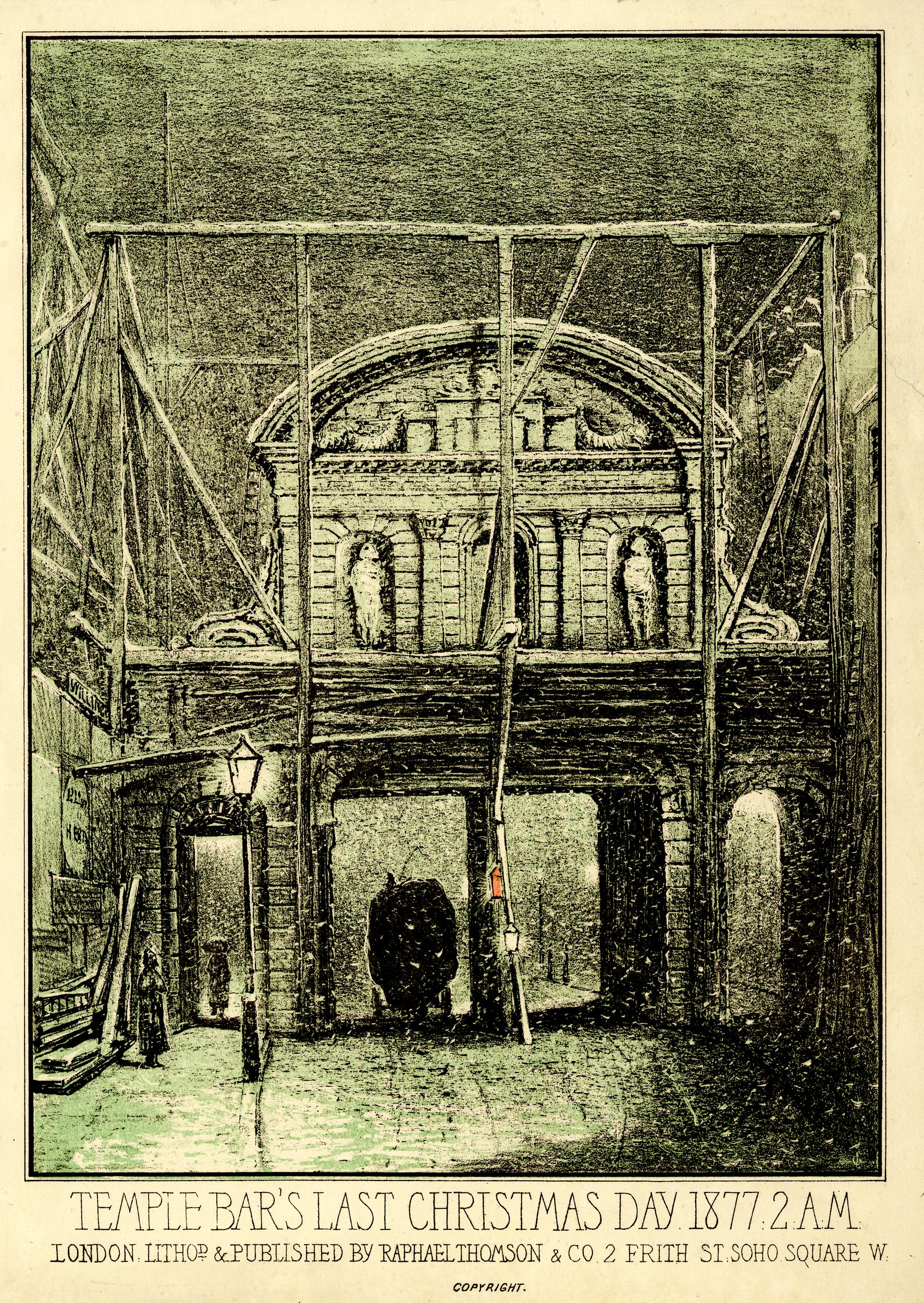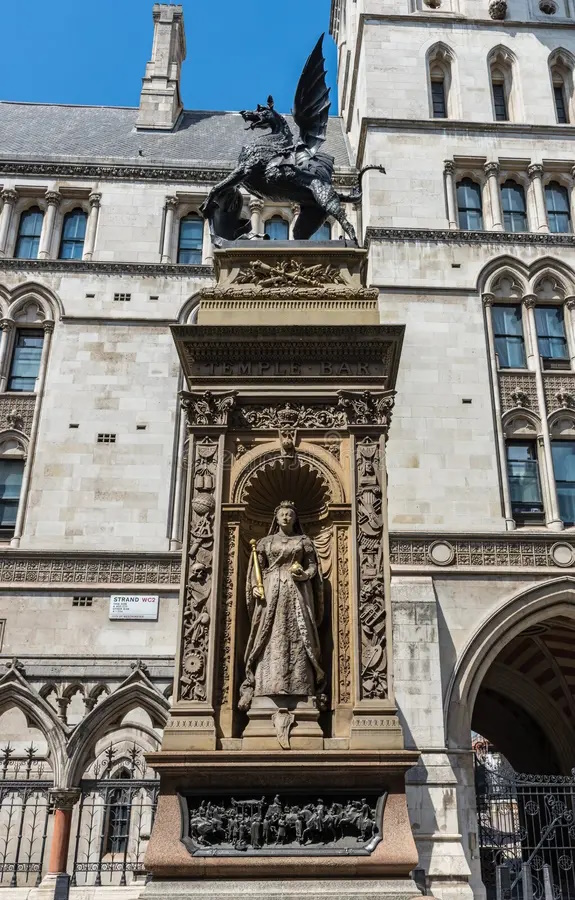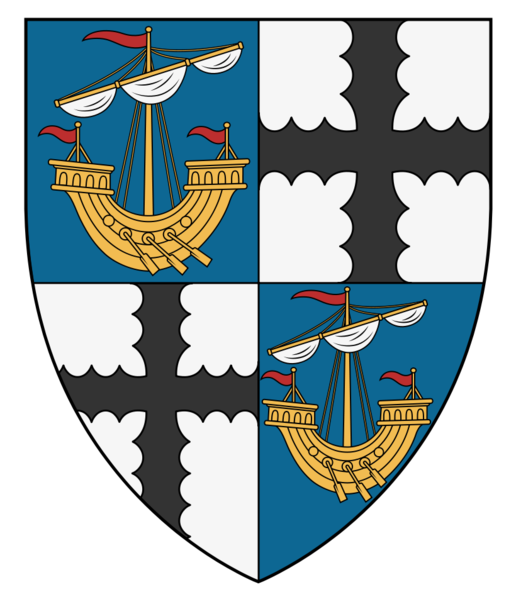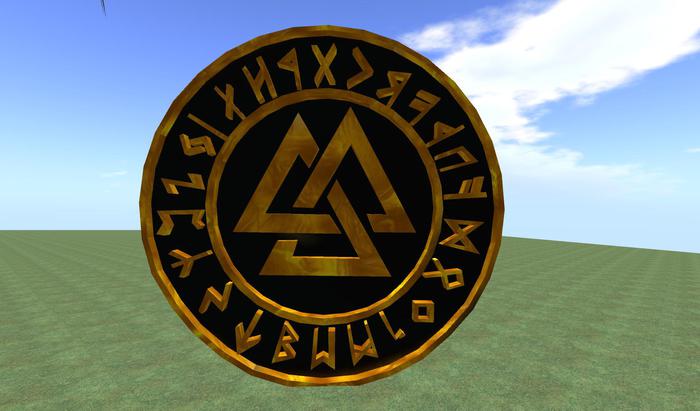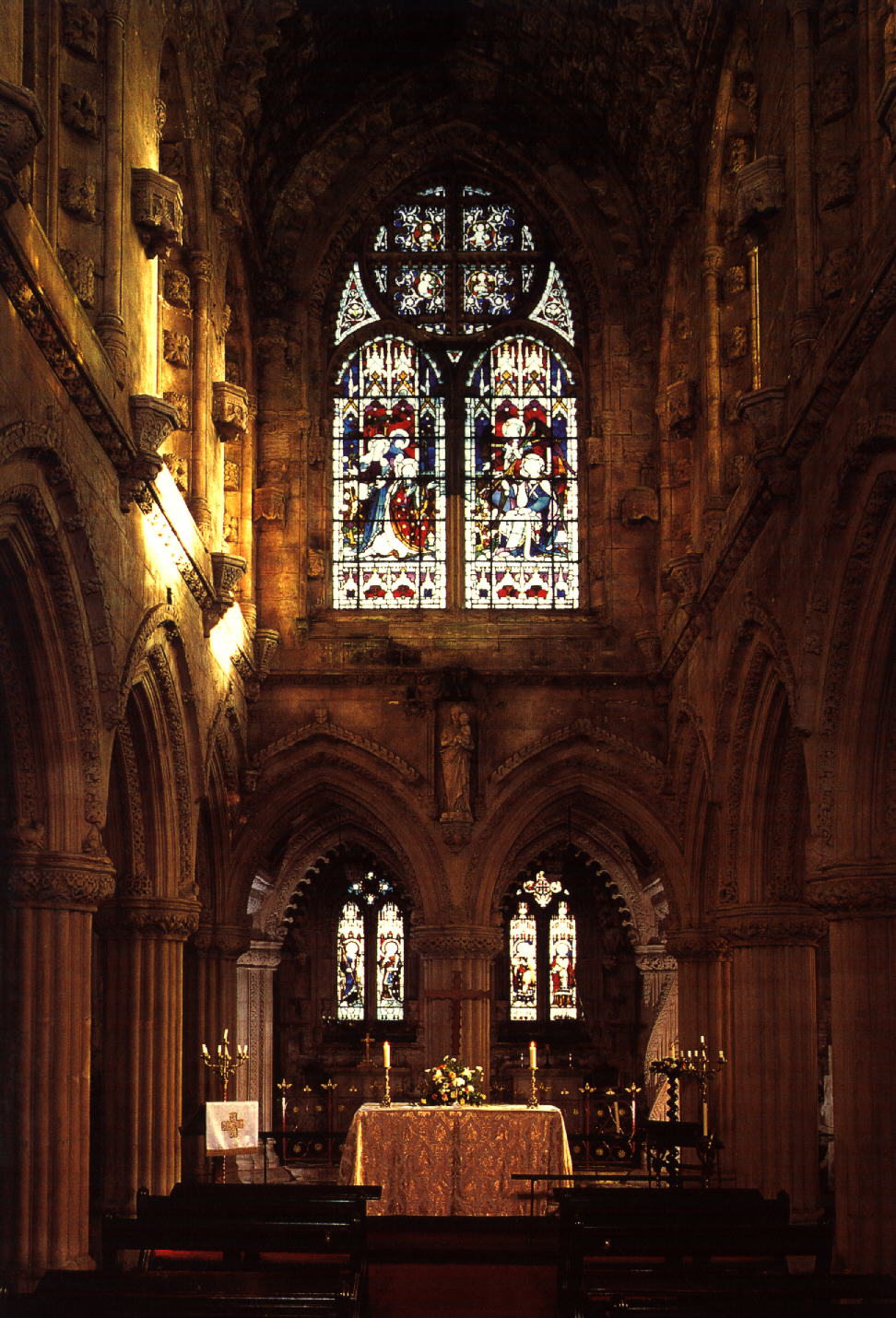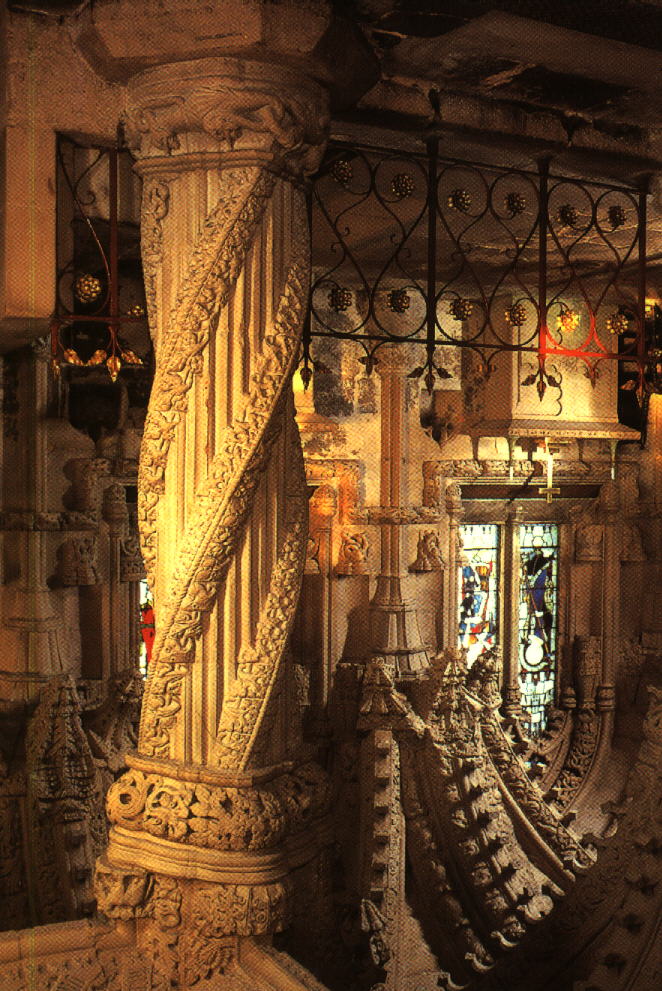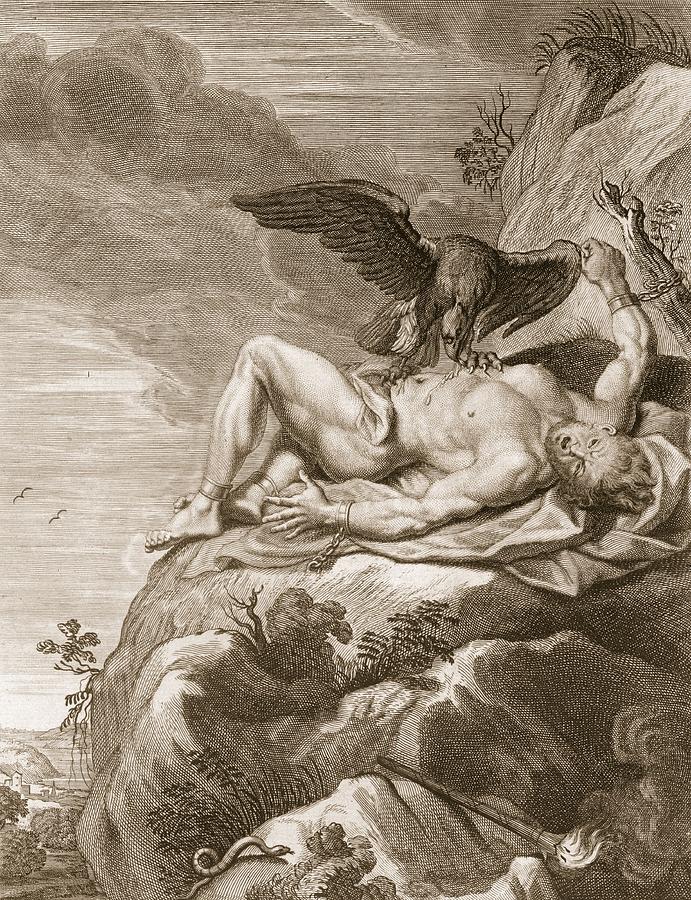
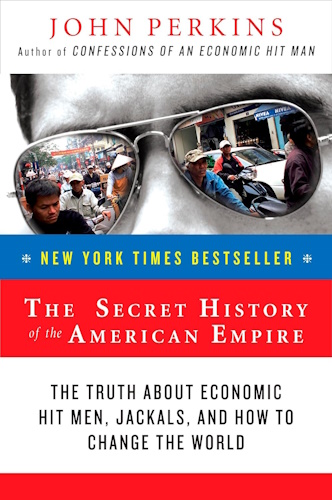

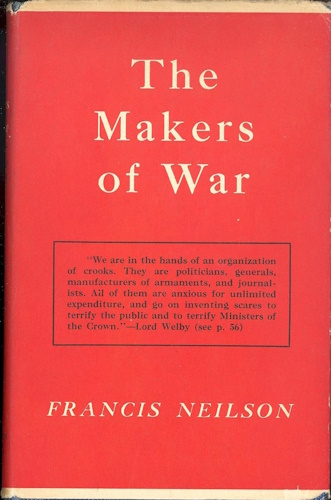

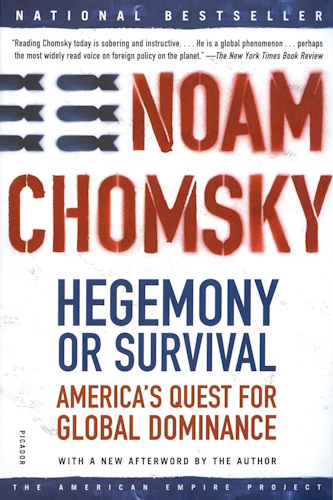



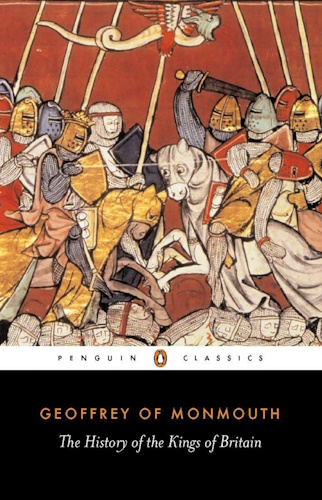

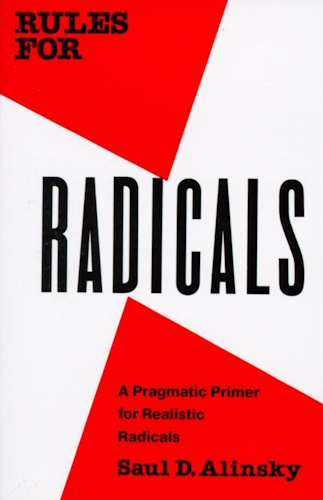

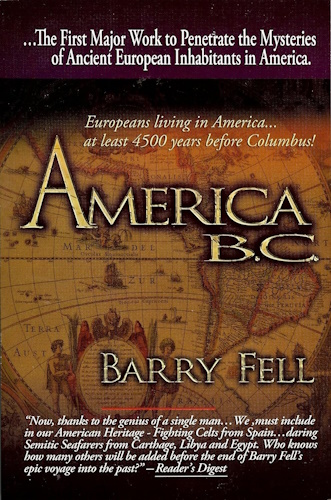

Whence & Pence
A Series
by
Douglas V. Gnazzo
January 6, 2005 - April 18, 2005
(Retrieved from archive.org)
![]()
Part 7: The Rounding
March 8, 2005
Round dealing is the honor of man's nature
TO BE OR NOT TO BE
The City of London is distinct from Greater London, commonly referred to as London. The city is actually limited to the historic center of London, which is the financial district, also known as the square mile – its approximate area. Greater London is the capital of the United Kingdom, which is composed of Scotland, Wales, England, and Northern Ireland. As such, London includes the City of London, the City of Westminster, and 31 other London boroughs.
Greater London has been under separate governance since 886, when Alfred the Great decreed that his son-in-law, Earl Aetheldred of Mercia, was Governor of London. Alfred's daughter was subsequently betrothed to the Earl. After William conquered England, Edgar Aetheling, Edwin of Mercia and Morcar of Northumbria surrendered before William ever successfully attacked the City, hence they saved London from being pillaged.
The Corporation of London is distinct from both the City of London and Greater London; and is the governing body of the City of London, the Lord Mayor of London being the head of the Corporation and Mayor of the City, with jurisdiction over the City of London but not over Greater London, which has its own Mayor of London. The City of London has on its border, two independent enclaves: Inner Temple and Middle Temple, which almost inspires visions of the Knights of the Temple – which it should.
However, and this is a most fascinating point, the Lord Mayor of London retains precedence over all individuals within the confines of the City, except the Sovereign. Added to this are some special powers and rights of privilege, which include the right to wear a chain of 28 golden emblems, referred to as the Collar of SS, with each emblem being in the shape of the letter S, which no one quite seems to know why, or at least they don't say; another one of those confounding conundrums, especially when added to what is a most extraordinary set up in regards to the City of London with Greater London, and with the Temples, and who rules what.
I wonder if this is all by happenchance, or dare we say a plan is at work – but a plan for what? Maybe we should not only follow the money, but also follow the liability or lack thereof, including jurisdiction and standing – without a place to stand upon, things can get a bit dicey, especially if the court jesters are 'round. Cui Bono? A thought – Washington D.C. has a similar set up. I guess great minds do think alike: – maybe, maybe not.
THE TEMPLE CHURCH
The Temple Church was built in London during the mid to late 12th century, and was completed in 1185, providing the main residence and base of operations for the Order of the Knights of the Temple. The main portion of the Church called the nave was constructed to replicate the Church of the Holy Sepulchre in Jerusalem, being of a round or circular design. About 50 years later a rectangular section called the Chancel was added and connected to the main round structure.
Within the Temple Church are many relics and artifacts, the above pictures are of some of the nine enshrined Knights.
One of the most heralded Knights entombed within is William Marshall, whom some say was the greatest Knight that ever lived. He was a fearless warrior – never defeated in over 500 hand to hand life or death tournaments; and he was never beaten in actual combat. It is said that William once could have killed Richard I in battle – instead he took the life of his horse, making sure that Richard understood the seriousnes of the moment from which he had just been pardoned.
Most fascinating was William's reward for such gallant service – he was given the hand of Isabel de Clare to wed, who was 17 at the time (he was 43); and descended from the House de Clare on the paternal side, and from the House of de Anjou on the maternal side. Because of this marriage, William became the Earl of Pembroke.
INNS OF THE COURT
Upon the dissolution of the Knights Templar in 1307, the Temple Church became a Crown possession of King Edward II. As with many of the Templar properties, the Church was given to the Order of the Knights Hospitaller, who rented the Temple to two groups or colleges of lawyers: the Inner Temple and the Middle Temple, referred together as the Inns of the Court.
The Templars had rented space to the lawyers previously, although such is seldom mentioned. It would only make sense that the Knights would have plenty of lawyers 'round, as they acted as bankers and intermediaries between the Church and other Sovereigns of State, all of which involved contracts, legal documents, negotiations, and other sundry matters of business and finance.
Habits of precedence are hard to break, so King Henry VIII decided to abolish the Knights Hospitallers, the dissolution taking place in 1540, accompanied by the requisite confiscation of all private property by the Crown, something or other about precedence and having the bigger army to back it all up with.
Henry continued to rent to the lawyers, providing a "Master of the Temple" to oversee the fees. The Inns of the Court didn't like the new arrangement, so they persuaded the King to rent them the properties at the same rate of 10 pounds per year that they had been paying for over two hundred years, the only difference now being that the Crown was the landlord.
In 1608, James the First made an effort to deprive the lawyers of the premises by affecting a sale. But the lawyers remained steadfast, this time presenting the King with a gold cup weighing two hundred ounces, filled to the brim with gold pieces – in exchange for a charter granting them the Temple forever, in perpetuity, at the old annual rental of ten pounds a year for each Society.
In 1673, however, the two Societies together purchased these rents from Charles II, and became the absolute owners forever: the one of the Inner Temple, and the other of the Middle Temple.
Thus the Temple premises, the heritage of an ancient order of Knights that fought the Crusades, became the permanent property of the lawyers, whose present title is based on the rent of 10 pounds for each of the two societies, paid at that time for its share as tenant. Neither the Inner nor the Middle Temple is within the legal bounds of the City of London, and they both are recognized by law as local authorities – quite unusual, yet very useful, to say the least.
PRIEST OR LAWYER
In previous parts of Whence & Pence, mention has been made of the Norman Conquest, and the battle of Hastings by which William the Conqueror took England. At the time of the Conquest, and until about 1207, only members of priestly orders could practice law, their training being in Canon Law. The Church was always well heeled in the ways of the world – as exemplified by having their own specialized Law and Sovereign State, the Vatican.
As time progressed, Common Law began to develop from the decisions of judges in the King's Court. Priests could no longer practice law in the secular courts in 1207; and in 1252 they were not even allowed to teach Common Law. In 1254, King Henry III issued a writ that ordered the Mayor and Sheriffs to close the schools of law in the City.
The City of London is only approximately one square mile in area, so the law schools simply moved to the Western edge of the City. The four Inns of Court emerged from these institutions: Lincoln's Inn, Gray's Inn, Inner Temple and Middle Temple.
TEMPLE BAR
The Temple Bar refers to one of the original eight gates of entrance to the City of London. Back in the Medieval Ages, walls surrounded the City. Entry was possible only at one of the eight city gates – all well guarded. Temple Bar was the most important and famous of these entrances, as traffic between London and Westminster passed through it. Adjacent to the gate was the Temple Church, hence the gateway came to be called the Temple Bar. Eventually a beautiful archway was constructed.
In days of old, the arch was oft times adorned with the heads of traitors, attached with iron spikes that protruded from the top of the main arch. In 1878, the Temple Bar was dismantled and moved, a statute of a griffin taking its place.
Recently the Temple Bar underwent a complete restoration as seen below. Note the adornments that silently pay tribute to the history of the past, present – and that yet to come.
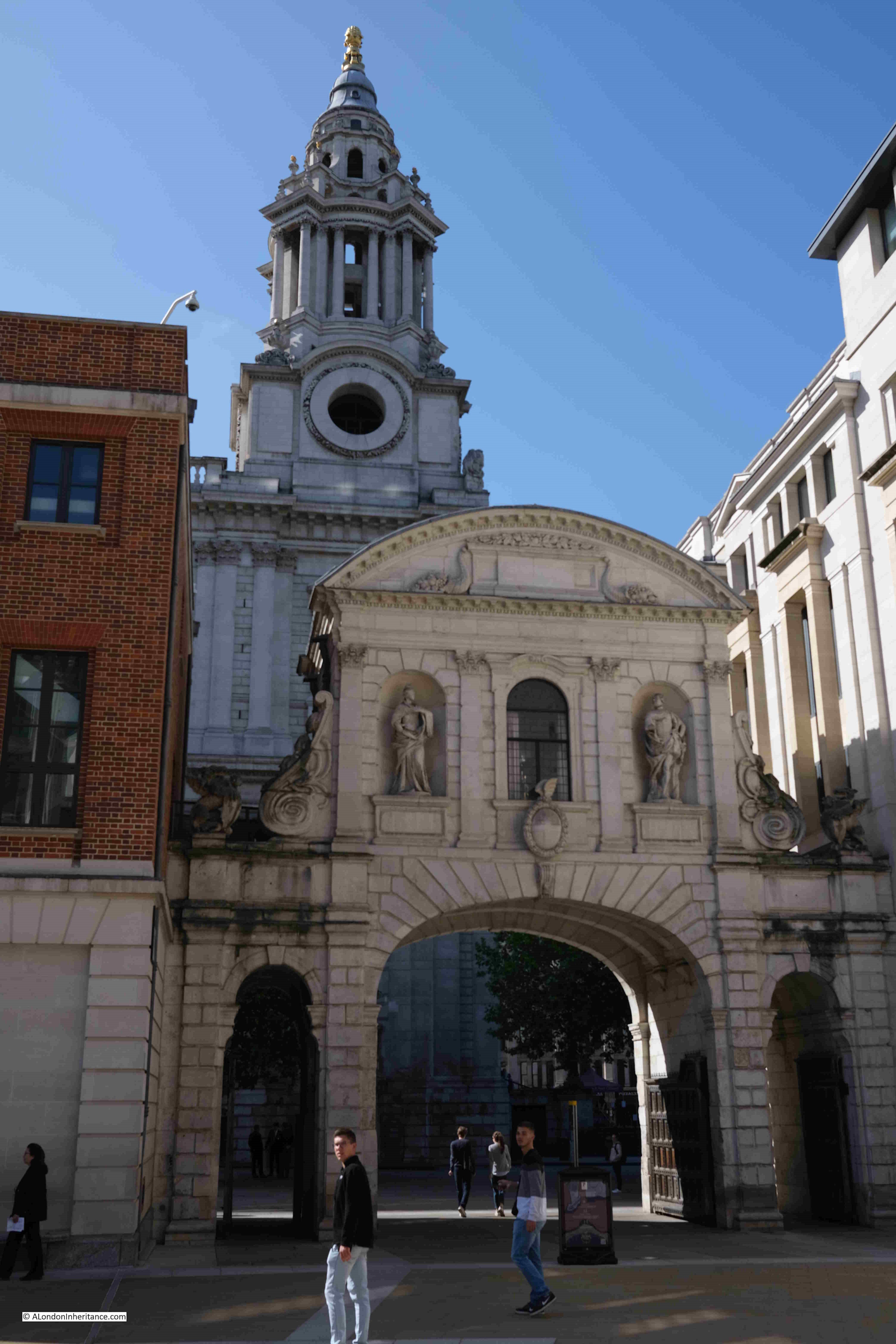
Between Paternoster Square and St. Pauls Cathedral

Entrance into Paternoster Square home to the London Stock Exchange
THE PRIVY COUNCIL
Previously touched upon in Whence & Pence, Part 2: The Confounding was the Privy Council and the Star Chamber; now for a more detailed look.
Early on the Council was a very power institution of the Crown, composed of a body of advisors to the British Sovereign. The Council also performed judicial functions, which were usually given to the Lord President of the Judicial Committee of the Council, who is the fourth highest Great Officer of State, a member of the Cabinet, and normally, the Leader of either the House of Lords or the House of Commons.
The Judicial Committee of the Privy Council is one of the highest courts in the United Kingdom; and it serves as the highest court of appeal for several independent Commonwealth countries. Presently, most – but not all, of the Court's duties are supposedly ceremonial, with most power residing in the Cabinet, however, the Cabinet is still recognized as a committee of the Privy Council.
"Powerful Sovereigns often used the body to circumvent the courts and Parliament. For example, a committee of the Council—which later became the Court of the Star Chamber—was during the fifteenth century permitted to inflict any punishment, except death, without being bound by any rules regarding evidence or the burden of proof. During Henry VIIIs reign, the Sovereign, on the advice of the Council, was allowed to enact laws by mere proclamation. The legislative pre-eminence of Parliament was not restored until after Henry VIII's death.
"The Sovereign exercises executive authority by making Orders-in-Council upon the advice of the Privy Council. Orders-in-Council, which are drafted by the government rather than by the Sovereign, are used to make simple government regulations.
Furthermore, they are used to grant the Royal Assent to laws passed by the legislative authorities of British crown dependencies.
Government appointments are also made by Orders-in-Council. Distinct from Orders-in-Council are Orders of Council. Whilst the former are made by the Sovereign on the advice of the Privy Council, the latter are made by members of the Privy Council without the participation of the Sovereign. They are issued under the specific authority of Acts of Parliament, and are normally used to regulate public institutions.
The Sovereign, furthermore, issues Royal Charters on the advice of the Privy Council. Charters grant special status to incorporated bodies; they are used to grant city status to towns.
The Crown-in-Council also performs certain judicial functions. Within the United Kingdom, the Crown-in-Council hears appeals from ecclesiastical courts, the Court of Admiralty of the Cinque Ports, prize courts and the Disciplinary Committee of the Royal College of Veterinary Surgeons, appeals against schemes of the Church Commissioners and appeals under certain Acts of Parliament.
The Crown-in-Council also hears appeals from several Commonwealth Realms, British Overseas Territories, Sovereign Base Areas and crown dependencies. The aforementioned cases are theoretically decided by the Crown-in-Council, but are in practice decided by the Judicial Committee, which consists of senior Judges who are Privy Counselors." [Wikipedia]
STAR CHAMBER

engraving published in Old and New London
1873 taken from 1836 drawing
The Star Chamber supposedly gets its name from the ceiling of the room at Westminster Abbey within which the court is held, the ceiling being painted with stars. It is interesting to note that five-pointed stars cover the ceiling of Rosslyn Chapel, but surely by coincidence. The Star Chamber was a most unique court – a lone and wayward child that had ventured far astray from the traditional system of jurisprudence, completely separate from the common-law courts of the day.
The Star Chamber began in the 15th century under the rule of the House of Lancaster and York. As most political and military courts do, the Chamber gradually widened its scope of power, slowly drawing in any who ventured near its ever-enlarging grasp. First came its growth as a prerogative court; then its extension as an equity court; and finally the progression of its jurisdiction over criminal cases as well.
Under the Royal guidance of the Tutor Dynasty, the court's powers were broadened further to include the acts of a political tribunal, used to silence any who questioned the decrees of Henry Eighth. Petitioners to the court were advised to use the Star Chamber as a court of original jurisdiction, not just as a last court of appeals.
In such proceedings there was no jury, and no further court of last appeal. Sentences included all types of corporal punishments, including whipping, pillorying, and branding – all basic forms of torture. Almost any sentence but death could be exacted. Such is the marvel of the evolution of the rule of law to behold.
Lastly came the Stuarts, and with due unreason. The court had come to be considered to have already overstepped all bounds of lawful fairness under James and Charles I, but more was yet to come. The court was now nothing more than a political tribunal of the Kings Prerogative, and was slowly becoming a military tribunal. Cases were held in secrecy behind closed doors; and there were no indictments, witnesses, juries, or appeals – a most unfortunate and telling precedent.
From 1628–1640, King Charles closed down the Parliament and instead used the Star Chamber as a type of dictatorial substitute, including the banning of any new books. When the people finally regained their sense of right and wrong, Charles ended up being executed. But at least we can all rest assured that nothing like the Star Chamber could happen in today's world of freedom and liberty – can it?
The House of Stuart did not want to give up the powers the Star Chamber and the Privy Council enabled them to wield. However, in 1641 the people finally stood up for their rights and passed an act to abolish the Star Chamber.
"The main effect of the abolition of the Star Chamber was to establish in England a system of justice administered by the Courts of Common Law with due process instead of by the administrative agencies of the Executive branch of government. The statute thus constituted an important reaffirmation of the concept of due process of the Common Law including the protection of the rights to life, liberty, and property from the arbitrary prosecution of government and secured to the people the right of prosecution through the grand jury and right of conviction through the jury of peers." [Holdsworth, op. cit., I 516; Albert V. Dicey, Introduction to the study of the Law of the Constitution, 98th Ed., London, (1915) pp. 263-264]
Some have even expressed concern over The International Criminal Court as being The Star Chamber for Global Governance. Nikola Kostich, a defense attorney from Milwaukee who has participated as legal counsel before the Court, notes in an interview in the New American, that the tribunal
"Is dedicated to the creation of precedents in international law, and in pursuing those precedents it is literally making up the law as it goes along."
Perhaps, perhaps not – such is for the reader to decide.
DEFENSE OF THE REALM
In Whence & Pence, Part 2: The Confounding it was stated that "we will revisit the chamber a little later, as it has a bit to do with the genesis of The War Powers Act – only in defense of the realm, however; especially in defense of the bankers realm – as seen in 1933-34 in The United States by Roosevelt's Gold Reserve Act."
The justification that Kings have used for special powers is the "in defense of the realm" argument. Such a state of war has been referred to as a National Emergency – and rightfully so. The War Powers Act and The Trading With the Enemy Act evolved from such.
On August 8, 1914, the British House of Commons passed the Defence of the Realm Act.
The "Act" gave government the power, in its discretion, to make violations of defense regulations subject to trial by Civil Courts of Summary Jurisdiction:
"Any preceding by which a controversy is settled, case disposed of, or trial conducted, in a prompt and simple manner, without the aid of a jury, without presentment or indictment, or in other respects out of the regular course of the common law." [Black's Law Dictionary, 5th Ed., p. 1084]
Civil Courts of Summary Jurisdiction were siblings of the Court of the Star Chamber; which in turn was a sibling of the King's Council. During the Middle Ages the Council exercised broad and undefined Judicial Powers.
"The Council was first composed of a shifting group of bishops, barons, and officers and it did not become a distinct body until the fourteenth century. At that time it consisted of the great officers of state, the officers of the household, a number of professional lawyers, some knights, and some of the lay and ecclesiastical nobility. Its functions thus constituted 'government by royal favorites.' The council had a reviewing authority over the inferior Courts and also had original jurisdiction in cases in which the King was especially interested." [Cora L. Scofield, A Study of the Court of Star Chamber XXIII - XXX; William S. Holdsworth, A History of English Law]
However, in 1933, President Roosevelt declared a National Emergency, using the War Powers Act and The Trading With The Enemy Act as supportive legislation to validate his actions. But was the United States involved in any war at that time? What was the National Emergency?
The National Emergency that Roosevelt was attempting to address was the "banking crisis". People were exercising their lawful right to withdraw their own money from the banks – because they feared the banks were going bankrupt, which they were. Some would argue that there wasn't any national emergency – only a banker's emergency.
If the bankers had simply made good on their contractual obligations to any and all depositors, by honoring their request to withdraw their deposits, there would not have been any emergency.
See Honest Money, Part VII: The Moneychangers - Secrets of the Temple."
But as with all systems of fractional reserve banking, the bankers didn't have the people's money to redeem to them as promised – that was the emergency. And it was the fault and responsibility of the bankers, which is supposedly why the Federal Reserve was created – to prevent exactly such a banking crisis from occurring. Yet here it was only 20 years after the Fed was created and the banks were going bankrupt. And according to Roosevelt the country was on its way to hell in a hand basket.
A year after his inauguration; Roosevelt offered the follow explanation of "the" emergency:
"... the full meaning of that word "emergency" related to far more than banks. It covered the whole economic and therefore the whole social structure of the country. It was an emergency that went to the roots of our agriculture, our commerce, and our industry; it was an emergency that had existed for a whole generation in its underlying causes and for three and one-half years in its visible effects. It could be cured only by a complete reorganization and a measured control of the economic structure. It could not be cured in a week, in a month, or a year. It called for a long series of new laws, new administrative agencies. It required separate measures affecting different subjects; but all of them component parts of a fairly definite broad plan. Most of all, it called forreadiness andunderstanding on the part of the people. We could never go back to the old order."
So the nation entered a New Era, a New Deal, and a New Order – all to save the bankers. The greatest nation on Earth – The United States of America was in such dire straits that reached down to the roots of her being, taking hold it appears, for an entire generation, without anyone ever noticing; and now the only life-saving remedy called for turning the fabric of America inside out – at least according to President Roosevelt and whomever he was listening to. And by what means was such a New Order had?
These are just a few of the changes the New Deal ushered in, but confiscating We The People's gold is fairly drastic medicine, so we thought it should be mentioned. You know that old saw about the cure can be worse than the illness. Many, many changes followed – volumes of laws, regulations, statutes, rules, licenses, and permits – all the important things that make for a completely ordered society. It is surprising that the Founding Fathers missed so much.
EDGAR AETHELING
Edgar Aetheling was the heir apparent to the British Crown, being the son of Edward the Exile, who, as the name implies, didn't hang around England for too long; the reason being that when he was only months old, Canute the Great, who was King of England, Denmark, and Norway sent poor Edgar to Denmark to be murdered, which is a fairly effective way to reduce your competition.
But such acts will come round about to haunt, seeking the reckoning by which the balancing takes place. The real Law is The Law, and as such, it is that by which all things move and have their being; and cannot be denied. Note the ancestry of Denmark and Norway playing into England's. Those men of the North did get 'round.
As previously mentioned in Whence & Pence, Part 4: The Resounding Robert Guiscard, reputed by many to be the greatest of all Normans, had defeated the Pope of Rome in 1053, subsequently the new Pope made peace with Robert, who, up until that time, had been the Vatican's worst nightmare. Then in 1066, William I conquered England. It would appear that the Normans, who were descended from Rollo the Viking, had world conquest on their mind.
We have also seen in Part IV, The Resounding, how there were several different factions or groups of Knights that went to fight in the Crusades. Some were Normans, some were Flemish, some were French, etc. Particularly noteworthy was the fact that there were two distinct groups of Normans, and that one group had been the Knights fighting with Robert Guiscard against the Pope in Rome. Yet here they were coming to the Church's rescue. Cui Bono?
Also interesting is the fact that the only two Knights who refused to offer fealty to Alexius I Emperor of the Byzantine Empire were Tancred and Bohemund, both Normans; and Bohemund was said to be the leader of the Crusades, yet after conquering Antioch, Bohemund stayed there to rule his new conquest.
It seems that the leader of the Crusade had lost interest in saving Jerusalem from the Muslims. Bohemund was the son of Robert Guiscard, and Tancred was Robert's grandson. So both Knights that had Viking blood flowing through their veins refused to pledge allegiance to the Emperor, and went off to conquer other cities prior to Jerusalem. Fascinating, but enough, back to Edgar.
Edgar Aetheling, the rightful heir to England according to direct lines of descent, was hiding out under the protection of the royal court in Hungary. Edgar, or someone for him, decided he should go back to England and lay claim to the throne. William St. Clair escorted Edgar's sister Margaret (and some say Edgar as well, but that is disputable) back to Britain, the year 1057.
William St. Clair was handsomely paid for his noble services, receiving from the king of Scotland the hill of Roslin, a hill that thereafter became a Sinclair stronghold and focal point of Scottish Freemasonry. William's son Henri de St Clair fought in the First Crusade.
OTHER PIECES ON THE BOARD
Now why was Malcolm III, King of Scotland, so beneficent to St. Clair? Might it have anything to do with the fact that Edgar's sister, Margaret, had married Malcolm, thus becoming the Queen of Scotland? Or perhaps it was because William was the cupbearer at the wedding? After the consecration by marriage had taken place, Malcolm decided to back Edgar in his claim to the English Crown. To seal the pact, Edgar married Malcolm's sister, who happened to be named Margaret.
Queen Margaret of Scotland had great effect upon the history of both Scotland and England. Three of Margaret's sons became Kings of Scotland: Edgar, Alexander, and David. Margaret had two daughters, Matilda and Mary. Matilda married Henry I of England, thus becoming Queen of England while uniting the Saxon and Norman bloodlines; her second daughter Mary married Eustace, Count of Boulogne (the Crusade guy); and their daughter also became Queen of England, by marrying King Stephen.
WHENCE THE KNIGHTS
Recall that fated day of Friday the 13th, 1307 when the Temple Knights were rounded up and thrown into the dudgeons by King Phillip of France. The Templar Fleet disappeared late that night, under the cover of darkness, never to be seen again. Many believe that hundreds, perhaps thousands of Knights escaped, on that dark and dreary night of Weir; rumors still linger of a vast fortune stowed below deck.
Many Knights are said to have sailed for Scotland, taking refuge with Robert I de Bruce, King of Scotland, a kindred Spirit who had likewise been excommunicated by the Pope in Rome.
The Templars had already established ties in this area of Scotland. Hugues de Payen, the first Grandmaster of the Knights, had married Catherine de St Clair of Roslin. The first Templar perceptory outside the Holy Land was built in Edinburgh on St Clair land.
Sir Henry Sinclair fought along side of Robert de Bruce at the famous battle of Bannockburn against King Edward II of England, the year 1314. Legend has it that Bruce was losing the battle when suddenly a fierce band of Knights led by Sinclair, undaunted and steadfast, took to the field and gained the victory and the day. Bruce rewarded Sinclair by granting him extensive lands. Sir Henry Sinclair was the 8th Baron of Roslin.
HOUSE OF SINCLAIR
The town of Saint-Clair-sur-l'Epte in Normandy is said to be from whence the House of Sinclair was born. King Charles 'the Simple' of France signed a treaty with Sir William at Castle St Clair-sur-Epte in 911, granting the Duchy of Normandy to him. King David 1 of Scotland granted land in Caithness to the family around 1120-1150.
Trying to trace this lineage is not easy, as there was more than one line of descent, and perhaps several. Although the area of Caithness was the family bastion, Rossyln was from whence they came. There are at least two main branches of the tree: Hermandston and Rosslyn. To confuse matters even more, it seems the family had a penchant for naming many of the boys with the name William and Henry, as there were many issue so named, and in both branches.
The Royal Norwegian Order of St. Olav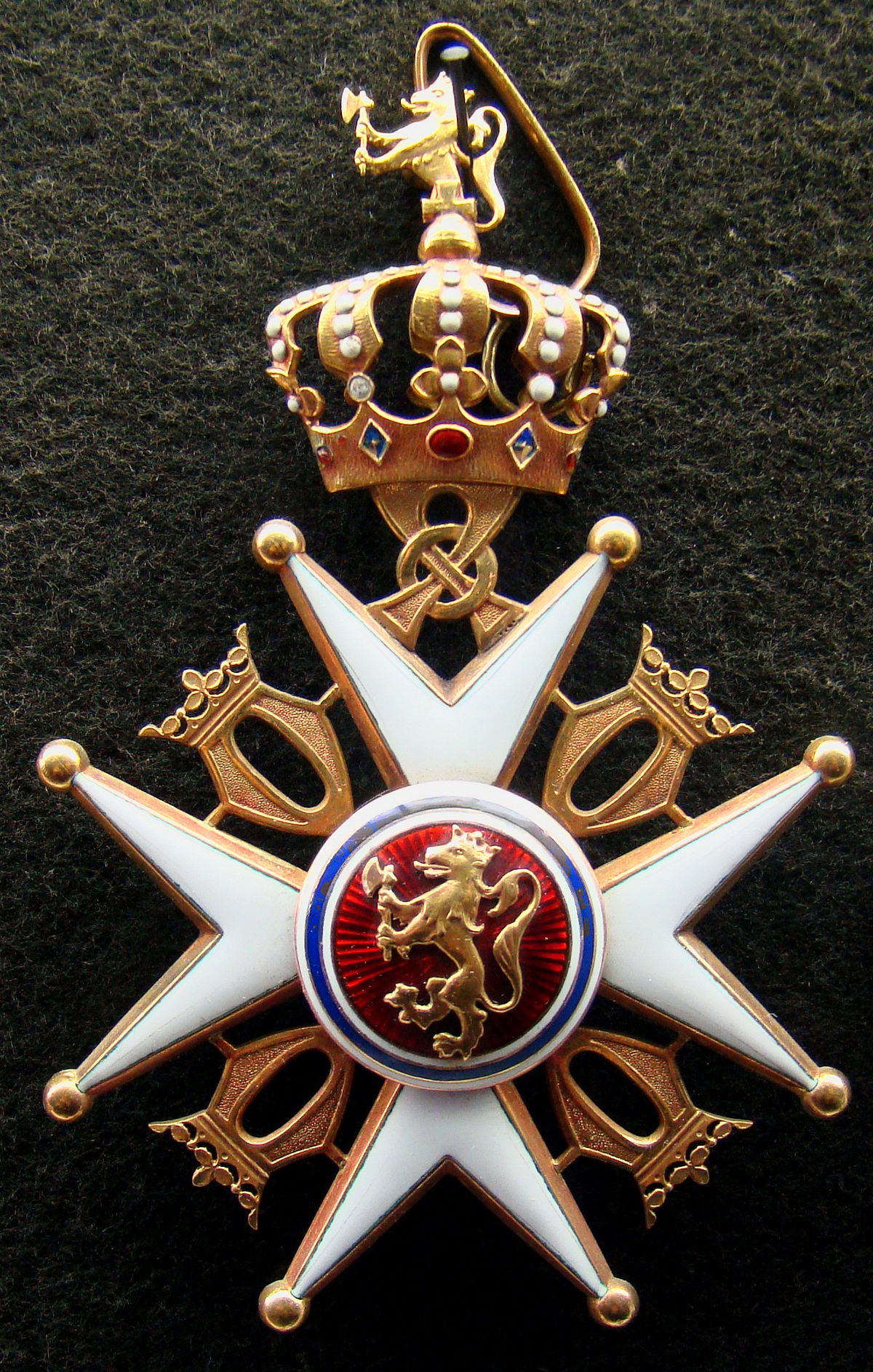
Notice how many times the names Norway and or Denmark play into all this. That's because once upon a time, Caithness and the surrounding areas belonged to Norway. The first recorded King of Norway was King Harald Fairhair, who was of the House of Odin. The first Earl of Caithness was the Norwegian Rogenwald, also Earl of Moeri, who was granted the title by King Harald of Norway in the late 800's.
The youngest son of Rogenwald was named Einar, who sired Malise II, who in turn had a daughter named Isabel – the one and the same Isabel that William Sinclair married. The eldest son of Rogenwald was Hrolf, or as most know him – Rollo. William Sinclair was a direct descendant of Rollo (Hrolf), which means that the descendants of two brothers were married to one another. Round and round the story goes, where it stops – some body must know.
Note the swastika on left face
ROSSYLN CHAPEL
The Chapel was built under the guidance of Sir William St. Clair, the third Prince of Orkney, beginning in 1146, taking about forty years to complete; and the portion that was built was meant only to be the choir section of the entire planned structure. Needless to say, Sir William intended to spend a fortune building this testament to Masonic architectural design and workmanship – if to nothing else. But credit is due where credit is due, and those that built this edifice were very skilled in their craft; and the building of the structure is a separate issue from the reason(s) why it was built.
The knowledge, skill, and craftsmanship that went into the construction of the Chapel defies most known bounds and enters not only the province of art, but of mysticism as well. Some of the carvings are truly unbelievable, as are the stories connected with them, both of which can be seen and read about by clicking on Rosslyn Chapel, the Official Website. The foundations of the Chapel were discovered fairly recently to be almost precisely identical to the foundations of the Jerusalem Temple – Solomon's Temple, in a round about way.
There is far too much history directly connected by the above-mentioned ties to be purely happenchance. One, two, even ten or twenty – but hundreds of "coincidences" strains the bounds of all reasonable credibility. Something is going on, and whatever it is, it has been deliberately kept out of the public eye, including most history books and systems of education.
Why? – One can only conjecture, but obviously, if something is kept hidden, it is because someone does not want it to be known. Each reader is capable of discerning the degree of veracity and potential impact and consequence such information, be it hidden or disclosed, can render – and has rendered.
Also, whatever it is, it seems to involve Royalty and or the governing bodies of nations that are usually descended from Royalty; the bankers that finance or are the middle men between most transactions of finance; and the legal profession of judges and lawyers, etc. that represent the laws of the governing body, which, inherently revert back to Royalty.
There are an awful lot of Royal European Houses that have interbred with one another; there have been several International Banking Families that have interbred both with the members of the Royal Houses, and amongst themselves; and many of these families are also involved in various types of Orders of Knights, Orders of Monks, and Orders of Freemasonry, Secret Societies and so on. Knots are made by the intertwining of different threads, or in the least – the two ends of one very long thread.
The world's monetary system has been shown in the Series Honest Money, Part I: The Constitution and Honest Money to be a paper fiat system of debt, purposely perpetrated upon We The People as a system of wealth transference, bound round the national debt. There has been a parasitic and symbiotic relationship between the "priests of the temple", the rulers of nations, and the bankers of the world, since day one. Cui Bono is becoming more and more apparent, and it isn't We The People. Just follow the money 'round to the one half of one percent that own 95% of everything – therein lies the answers.
Prometheus
"In that abyss I saw how love held bound
Into one volume all the leaves whose flight
Is scattered through the universe around…"
Dante
Part eight will be forthcoming, to continue the unraveling of the Gordian Knot, which appears to have loosened considerably.
![]()
© 2005 Douglas V. Gnazzo
![]()
![]()
![]()
Disclaimer:
Some material presented will contain links, quotes, ideologies, etc., the contents of which should be understood to first, in their whole, reflect the views or opinions of their editors, and second, are used in my personal research as "fair use" sources only, and not espousement one way or the other. Researching for 'truth' leads one all over the place...a piece here, a piece there. As a researcher, I hunt, gather and disassemble resources, trying to put all the pieces into a coherent and logical whole. I encourage you to do the same. And please remember, these pages are only my effort to collect all the pieces I can find and see if they properly fit into the 'reality aggregate'.
Personal Position:
I've come to realize that 'truth' boils down to what we 'believe' the facts we've gathered point to. We only 'know' what we've 'experienced' firsthand. Everything else - what we read, what we watch, what we hear - is what someone else's gathered facts point to and 'they' 'believe' is 'truth', so that 'truth' seems to change in direct proportion to newly gathered facts divided by applied plausibility. Though I believe there is 'truth', until someone representing the celestial realm visibly appears and presents the heavenly records of Facts And Lies In The Order They Happened, I can't know for sure exactly what "the whole truth' on any given subject is, and what applies to me applies to everyone. Until then I'll continue to ask, "what does The Urantia Book say on the subject?"
~Gail Bird Allen
![]()
![]()














-
Urantia Book, 44:0.11 - The Celestial Artisans
Never in your long ascendancy will you lose the power to recognize your associates of former existences. Always, as you ascend inward in the scale of life, will you retain the ability to recognize and fraternize with the fellow beings of your previous and lower levels of experience. Each new translation or resurrection will add one more group of spirit beings to your vision range without in the least depriving you of the ability to recognize your friends and fellows of former estates.
-
Princess Bride 1987 Wallace Shawn (Vizzini) and Mandy Patinkin (Inigo Montoya)
Vizzini: HE DIDN'T FALL? INCONCEIVABLE.
Inigo Montoya: You keep using that word. I do not think it means what you think it means. -
Urantia Book, 117:4.14 - The Finite God
And here is mystery: The more closely man approaches God through love, the greater the reality -- actuality -- of that man. The more man withdraws from God, the more nearly he approaches nonreality -- cessation of existence. When man consecrates his will to the doing of the Father's will, when man gives God all that he has, then does God make that man more than he is.
-
Urantia Book, 167:7.4 - The Talk About Angels
"And do you not remember that I said to you once before that, if you had your spiritual eyes anointed, you would then see the heavens opened and behold the angels of God ascending and descending? It is by the ministry of the angels that one world may be kept in touch with other worlds, for have I not repeatedly told you that I have other sheep not of this fold?"
-
Urantia Book, Foreword - 0:12.12 - The Trinities
But we know that there dwells within the human mind a fragment of God, and that there sojourns with the human soul the Spirit of Truth; and we further know that these spirit forces conspire to enable material man to grasp the reality of spiritual values and to comprehend the philosophy of universe meanings. But even more certainly we know that these spirits of the Divine Presence are able to assist man in the spiritual appropriation of all truth contributory to the enhancement of the ever-progressing reality of personal religious experience—God-consciousness.
-
Urantia Book, 1:4.3 - The Mystery Of God
When you are through down here, when your course has been run in temporary form on earth, when your trial trip in the flesh is finished, when the dust that composes the mortal tabernacle "returns to the earth whence it came"; then, it is revealed, the indwelling "Spirit shall return to God who gave it." There sojourns within each moral being of this planet a fragment of God, a part and parcel of divinity. It is not yet yours by right of possession, but it is designedly intended to be one with you if you survive the mortal existence.
-
Urantia Book, 1:4.1 - The Mystery Of God
And the greatest of all the unfathomable mysteries of God is the phenomenon of the divine indwelling of mortal minds. The manner in which the Universal Father sojourns with the creatures of time is the most profound of all universe mysteries; the divine presence in the mind of man is the mystery of mysteries.
-
Urantia Book, 1:4.6 - The Mystery Of God
To every spirit being and to every mortal creature in every sphere and on every world of the universe of universes, the Universal Father reveals all of his gracious and divine self that can be discerned or comprehended by such spirit beings and by such mortal creatures. God is no respecter of persons, either spiritual or material. The divine presence which any child of the universe enjoys at any given moment is limited only by the capacity of such a creature to receive and to discern the spirit actualities of the supermaterial world.
-
Urantia Book, 11:0.1 - The Eternal Isle Of Paradise
Paradise is the eternal center of the universe of universes and the abiding place of the Universal Father, the Eternal Son, the Infinite Spirit, and their divine co-ordinates and associates. This central Isle is the most gigantic organized body of cosmic reality in all the master universe. Paradise is a material sphere as well as a spiritual abode. All of the intelligent creation of the Universal Father is domiciled on material abodes; hence must the absolute controlling center also be material, literal. And again it should be reiterated that spirit things and spiritual beings are real.
-
Urantia Book, 50:6.4 - Planetary Culture
Culture presupposes quality of mind; culture cannot be enhanced unless mind is elevated. Superior intellect will seek a noble culture and find some way to attain such a goal. Inferior minds will spurn the highest culture even when presented to them ready-made.
-
Urantia Book, 54:1.6 - True And False Liberty
True liberty is the associate of genuine self-respect; false liberty is the consort of self-admiration. True liberty is the fruit of self-control; false liberty, the assumption of self-assertion. Self-control leads to altruistic service; self-admiration tends towards the exploitation of others for the selfish aggrandizement of such a mistaken individual as is willing to sacrifice righteous attainment for the sake of possessing unjust power over his fellow beings.
-
Urantia Book, 54:1.9 - True And False Liberty
How dare the self-willed creature encroach upon the rights of his fellows in the name of personal liberty when the Supreme Rulers of the universe stand back in merciful respect for these prerogatives of will and potentials of personality! No being, in the exercise of his supposed personal liberty, has a right to deprive any other being of those privileges of existence conferred by the Creators and duly respected by all their loyal associates, subordinates, and subjects.
-
Urantia Book, 54:1.8 - True And False Liberty
There is no error greater than that species of self-deception which leads intelligent beings to crave the exercise of power over other beings for the purpose of depriving these persons of their natural liberties. The golden rule of human fairness cries out against all such fraud, unfairness, selfishness, and unrighteousness.

